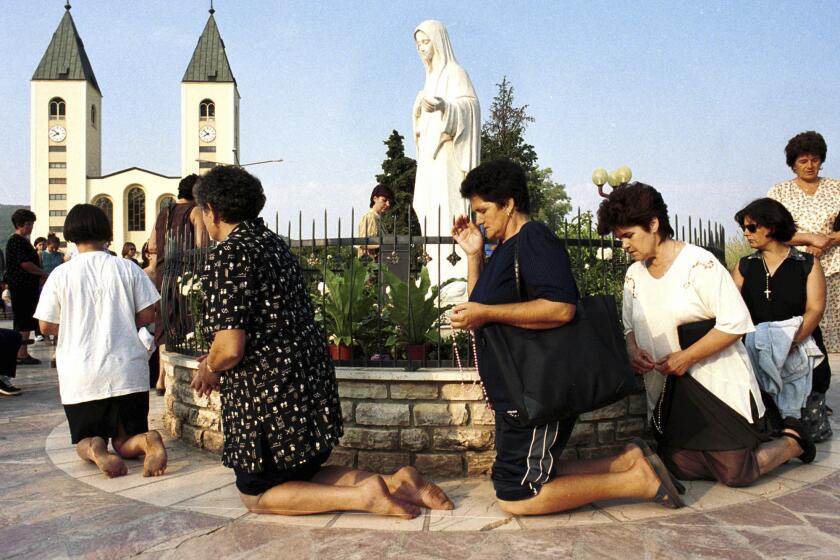Clothing Price Hikes Lift Inflation to 5%
Sharp increases in fall and winter clothing lines put consumer price inflation back in the range of 5% despite the smallest monthly increase in food costs since last February, the government said today.
Consumer prices rose 0.4% in October, the Commerce Department said.
A 1.8% gain in apparel costs was accompanied by moderate price increases for food, which had posted steep, drought-related increases over the summer.
The jump in clothing prices was virtually as steep as the 2% increase posted in September. In the last three months, apparel costs have replaced hospital costs and food prices as the greatest stimulant of inflation, the Labor Department said in releasing today’s report.
The apparel cost gains reflected the introduction of higher-priced fall and winter fashions, particularly for women’s and girls’ clothing, which rose 2.5% after a 3.5% increase in September.
Shoe prices also rose 2.5% after a 3.5% increase the previous month.
The 0.4% overall October increase would amount to an annual inflation rate of 5.1% if it persisted for 12 months. The annualized rate had declined to 4.1% in September on a large drop in gasoline costs.
Gasoline prices fell an additional 1.0% in October after a 1.7% drop in the preceding month. But the decrease was not big enough to offset a 1.4% increase in electricity and natural gas costs, which raised consumer energy prices for the month by 0.1%.
Food prices rose just 0.2%, one-fourth the 0.8% jump of September, on large decreases in prices for fruits and vegetables, poultry and pork.
Prices for beef, pork and poultry last month fell 0.3%, 0.8% and 3.0%, respectively. Offsetting those lower prices was the biggest monthly price increase for dairy products since December, 1980--0.9%. Cereal and bakery products costs rose 0.7%.
Excluding food and energy, prices rose 0.5% for the month, more than half of which was due to sharp increases in clothing prices and automobile insurance and finance charges, the Labor Department said.
Donald Ratajczak, who tracks price changes for Georgia State University, said the relief consumers felt at the grocery store from lower meat prices, the result of early slaughters because of drought-depressed supplies of feed grain, will not last.
“The opposite effect will prevail next spring as the supply of meat animals is reduced, forcing prices higher,” he said.
More to Read
Start your day right
Sign up for Essential California for news, features and recommendations from the L.A. Times and beyond in your inbox six days a week.
You may occasionally receive promotional content from the Los Angeles Times.






